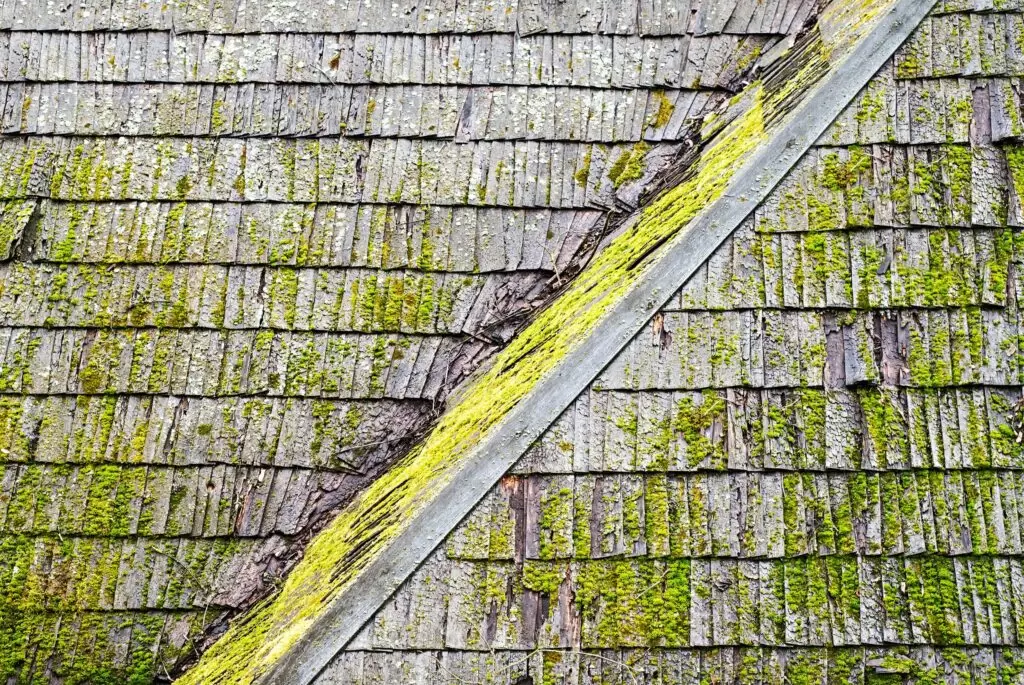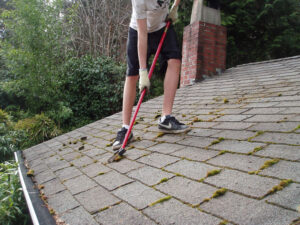Moss growth on roofs is a common issue in both commercial and residential settings. While it may seem like a minor nuisance, moss can cause significant damage to roofing materials, leading to leaks, decay, and expensive repairs. The methods used to remove moss from a commercial roof differ from those used for residential properties due to variations in roofing materials, size, and maintenance requirements. Understanding the differences between commercial and residential roof moss removal can help property owners choose the most effective solutions to protect their investments.
Understanding Moss Growth on Roofs
Moss thrives in damp, shaded environments, making rooftops an ideal breeding ground, especially in regions with high humidity and frequent rainfall. The spores spread easily through the air, taking root in any crevice where moisture is retained. Once established, moss can grow rapidly, holding onto water and causing structural damage to shingles, tiles, and other roofing materials. If left untreated, the issue can lead to compromised roof integrity, resulting in expensive repairs or even full roof replacements.
Commercial Roof Moss Removal Challenges

Commercial roofs are typically larger than residential roofs, which means that moss removal is a more extensive process. Many commercial buildings have flat or low-slope roofs, which collect more standing water than sloped residential roofs. This increased moisture retention provides an ideal environment for moss growth.
The materials used for commercial roofing also present unique challenges. Common materials such as EPDM rubber, PVC, TPO membranes, and built-up roofing systems require specialized care when removing moss. Aggressive cleaning methods or harsh chemicals can damage these materials, leading to reduced longevity and costly repairs.
Additionally, commercial buildings often have rooftop HVAC units, ventilation systems, and other equipment that can make moss removal more complicated. Careful planning is necessary to prevent damage to these installations while ensuring that all traces of moss are effectively removed.
Residential Roof Moss Removal Considerations
Residential roofs, while smaller in scale, have their own challenges when it comes to moss removal. Most residential properties have sloped roofs made from asphalt shingles, wood shakes, metal, or tile. Each material requires a different approach to moss removal to prevent damage while ensuring long-term protection.
Asphalt shingles are among the most common roofing materials used in homes, but they are also highly susceptible to moss growth. Moss can lift shingles, allowing moisture to penetrate and potentially cause leaks. Wood shakes, another popular material, can deteriorate quickly if moss is allowed to take hold, leading to premature roof failure.
Since residential properties are often surrounded by trees, shade plays a major role in moss development. Overhanging branches can trap moisture and limit sun exposure, creating an ideal environment for moss to flourish. Regular maintenance, such as trimming trees and improving drainage, can help reduce the risk of moss growth.
Differences in Moss Removal Techniques
The techniques used to remove moss from commercial and residential roofs vary depending on the roof type and materials involved.
For commercial roofs, professional roof cleaners typically use gentle cleaning methods, such as soft washing, which involves applying biodegradable cleaning solutions to break down moss without causing damage to roofing materials. Power washing is generally avoided on commercial roofs due to the risk of puncturing membranes or causing leaks. Some professionals use specialized brushes or low-pressure rinsing systems to safely remove moss.
In residential settings, roof moss removal may involve soft washing, hand-scraping, or applying chemical treatments designed to kill moss at the root. Homeowners may attempt DIY moss removal, but using improper techniques can cause shingle damage. Professionals often recommend zinc or copper strips installed along the roof ridge to prevent future moss growth, as these metals naturally inhibit moss formation when rainwater washes over them.
Preventing Future Moss Growth
 Prevention is key to minimizing ongoing moss problems for both commercial and residential properties. Since moss thrives in damp environments, improving drainage and increasing sunlight exposure can significantly reduce the likelihood of regrowth.
Prevention is key to minimizing ongoing moss problems for both commercial and residential properties. Since moss thrives in damp environments, improving drainage and increasing sunlight exposure can significantly reduce the likelihood of regrowth.
For commercial buildings, routine maintenance and inspections are essential. Facility managers should implement a scheduled cleaning program to prevent moss from accumulating. Installing roof coatings that discourage moss growth or using algae-resistant roofing materials can also help mitigate the problem.
For residential properties, homeowners can take proactive measures by trimming back tree branches, keeping gutters clean, and ensuring that roofs receive adequate airflow. Regular roof inspections can help detect early signs of moss growth before they become major issues.
Choosing the Right Professional for the Job
While some homeowners may attempt to remove moss themselves, professional roof cleaning services are often the best choice for ensuring safe and effective removal. Commercial property owners, in particular, should hire experienced professionals who understand the complexities of flat and low-slope roofs.
When selecting a roof cleaning company, it is important to choose one with experience in handling the specific roofing materials used on the property. A reputable company will use safe, environmentally friendly cleaning solutions and follow best practices to ensure the longevity of the roof.